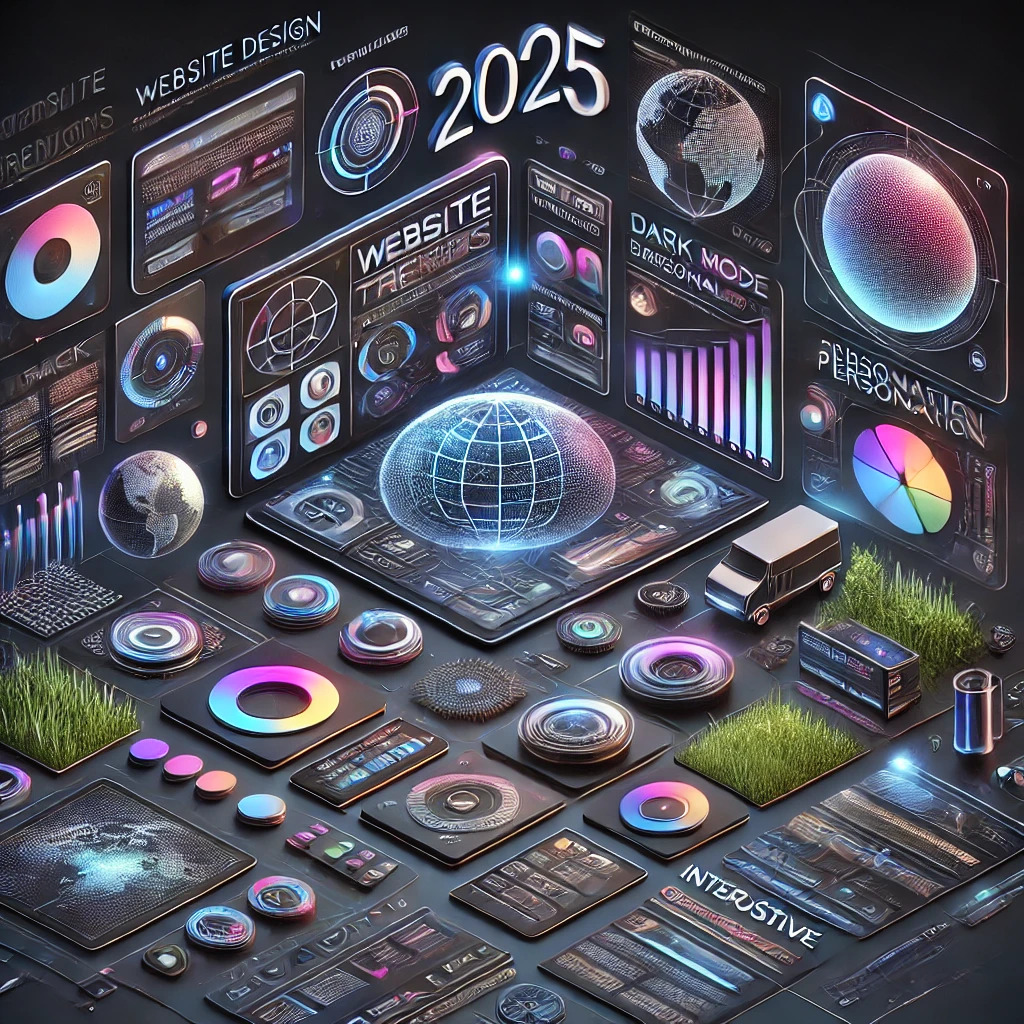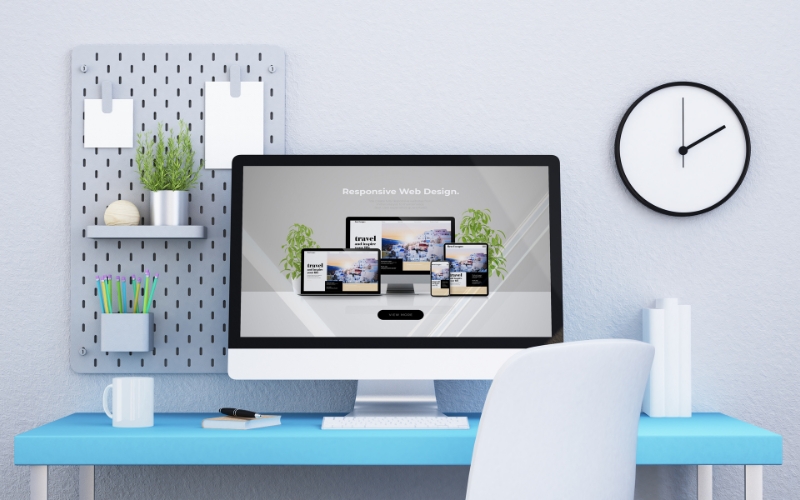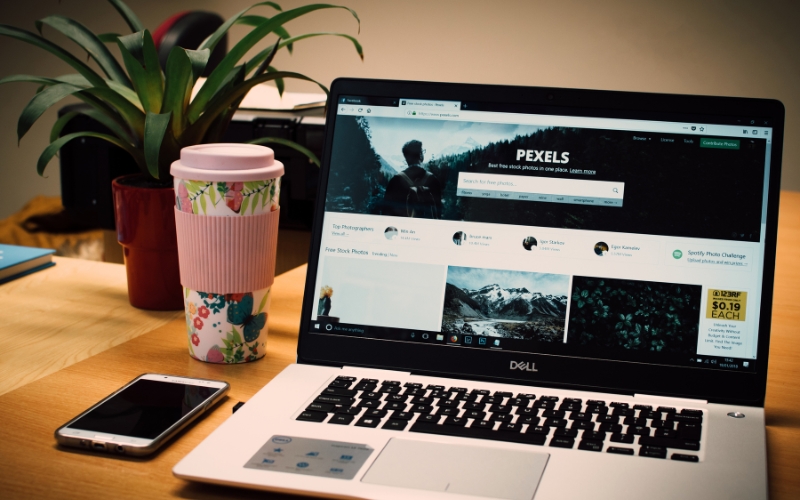
The landscape of web design is constantly evolving, and as we approach 2025, website design trends are taking a bold leap forward, blending innovation with functionality. Among these trends, the reimagining of minimalism stands out as a transformative approach that prioritizes clarity and user-centric experiences. This new iteration of minimalism focuses on creating clean, purposeful designs that enhance usability while maintaining aesthetic appeal. By emphasizing content and removing unnecessary distractions, modern web design is setting the stage for seamless, engaging digital interactions.
Minimalism Reimagined: The Rise of Content-Centric Design

Minimalism in web design has evolved significantly over the years, and as we approach 2025, it remains one of the dominant website design trends. However, minimalism today is less about stripping websites of all elements and more about ensuring that every design choice serves a specific purpose. This new wave of minimalism prioritizes content clarity and functionality, delivering an engaging experience without visual clutter.
Clean Layouts and Structured Navigation
Among the most noteworthy website design trends, the focus on clean layouts continues to thrive. Grid-based structures, organized content blocks, and consistent visual hierarchy are being widely adopted. These layouts not only enhance aesthetics but also guide users through websites seamlessly. With fewer distractions, users can quickly find the information they need, making the browsing experience efficient and enjoyable.
The Strategic Use of White Space
White space, often called negative space, has become a critical tool in minimalist design. By giving content room to breathe, designers are emphasizing key elements without overwhelming users. This practice aligns perfectly with modern website design trends, which prioritize simplicity and clarity. Thoughtful use of white space also improves readability, ensuring that text and visuals stand out, especially on smaller screens.
Functionality Takes Center Stage
Minimalism in 2025 is less about appearance and more about function. The latest website design trends emphasize reducing unnecessary elements while enhancing features that improve usability. Simple navigation menus, intuitive interfaces, and clear call-to-action buttons are central to this philosophy. The goal is to create a frictionless experience where users can accomplish their objectives without confusion.
Subtle Enhancements That Add Depth
Even within a minimalist framework, designers are incorporating subtle enhancements to keep websites dynamic. Micro-interactions, soft gradients, and thoughtful typography are popular website design trends that add depth and personality to minimalist sites. These elements provide a modern touch while keeping the overall design clean and uncluttered.
A Focus on Performance and Accessibility
As minimalism evolves, it also incorporates other website design trends like performance optimization and accessibility. Fast-loading pages, mobile-first designs, and compliance with accessibility standards are non-negotiable in today’s digital landscape. Minimalist websites are built to cater to all users, regardless of their device or abilities.
Interactive and Immersive User Experiences

As technology evolves, so do website design trends, with interactive and immersive user experiences taking center stage in 2025. These trends focus on captivating users through dynamic, engaging elements that create memorable interactions and leave a lasting impression. By leveraging advancements in technology, websites are moving beyond static designs to deliver experiences that resonate with users on a deeper level.
Micro-Animations and Hover Effects
One of the standout website design trends for enhancing user engagement is the use of micro-animations and hover effects. These subtle yet impactful design elements guide users through a website intuitively. For instance, buttons that change color or size on hover encourage interaction without overwhelming the user. Similarly, animated icons or progress indicators add a layer of sophistication while communicating important information seamlessly.
Interactive Storytelling
Interactive storytelling has emerged as a powerful way to keep users engaged. By integrating elements like clickable narratives, scroll-triggered animations, or dynamic infographics, websites can craft experiences that feel personalized and immersive. This trend aligns with the growing demand for storytelling in website design trends, allowing brands to convey their message in a compelling and visually appealing way.
WebGL and 3D Elements
Technologies like WebGL and 3D graphics are revolutionizing web design by enabling immersive visuals that capture attention. From virtual tours to interactive product displays, these tools are among the most exciting website design trends in recent years. They allow users to explore content in a hands-on way, bridging the gap between static websites and real-world interaction. As these technologies become more accessible, their adoption will only continue to grow.
Personalized User Interactions
Modern website design trends also emphasize personalized user experiences. By utilizing AI and machine learning, websites can adapt in real-time based on user behavior. For example, tailored product recommendations, interactive chatbots, or dynamic content adjustments ensure users feel seen and valued. These features not only enhance user satisfaction but also boost conversion rates.
Accessibility in Interaction
While focusing on interactivity, designers are also ensuring these experiences are accessible. Following inclusive design principles, interactive websites now cater to users with varying abilities, ensuring compliance with accessibility standards. This trend makes interactivity universal, reflecting the progressive direction of website design trends.
Dark Mode and Color Gradients: Visual Aesthetics That Pop

As digital aesthetics continue to evolve, website design trends for 2025 prominently feature the growing popularity of dark mode and vibrant color gradients. These design elements offer a modern, sleek, and visually striking approach that appeals to users seeking both functionality and style. By balancing visual appeal with readability, designers are using these trends to create more immersive and engaging user experiences.
The Continued Rise of Dark Mode
Dark mode has become a staple in modern web design, and its dominance is set to continue as one of the most significant website design trends. Offering a sleek, professional look, dark mode enhances the overall aesthetic of a website while reducing eye strain for users. It’s especially effective for websites that rely on high-contrast visuals, such as photography portfolios, creative agency pages, or e-commerce sites showcasing premium products.
One key advantage of dark mode is its ability to make vibrant colors, text, and images stand out. This feature aligns perfectly with other website design trends, such as minimalism and interactivity. Additionally, dark mode contributes to energy efficiency on OLED screens, a small but meaningful step toward sustainable design.
The Comeback of Vibrant Color Gradients
Color gradients are another vital player in website design trends, offering a dynamic alternative to flat color schemes. Gradients add depth and dimension to backgrounds, buttons, and other UI elements, creating a sense of movement and visual interest. In 2025, we see gradients taking on bold, vibrant hues, often paired with dark mode to enhance their impact.
Modern gradients aren’t just limited to subtle transitions. Designers are experimenting with multi-color palettes and asymmetrical blending, giving websites a fresh and contemporary feel. These vivid gradients can evoke emotion, establish brand identity, and draw users’ attention to key areas, such as call-to-action buttons or headlines.
Achieving Balance Between Style and Readability
While dark mode and gradients offer undeniable aesthetic appeal, their effectiveness hinges on proper implementation. As website design trends evolve, designers must prioritize readability and accessibility. For instance, ensuring text remains legible against gradient backgrounds or avoiding excessive brightness in dark mode layouts are crucial considerations.
Why These Trends Matter
Dark mode and color gradients represent a fusion of style and functionality. By embracing these website design trends, businesses can create visually compelling websites that resonate with modern users, ensuring a cutting-edge digital presence in 2025.
AI-Driven Personalization: Tailoring Experiences for Every User

Artificial intelligence (AI) and machine learning are revolutionizing the way websites deliver personalized experiences, making website design trends for 2025 more user-focused than ever. Personalization is no longer a luxury; it’s an expectation. By leveraging AI, websites can dynamically adapt to user behaviors, preferences, and needs, creating a seamless and engaging browsing experience that feels uniquely tailored to each visitor.
Personalizing Content with AI
One of the most significant website design trends is the use of AI to create personalized content. Modern algorithms analyze user data such as browsing history, location, and interaction patterns to deliver highly relevant content. For instance, e-commerce websites can recommend products based on past purchases, while content platforms suggest articles that match a user’s interests. This level of personalization enhances user engagement and encourages repeat visits.
AI also enables dynamic content updates. Websites can change their layout, messaging, or visuals in real-time to align with individual preferences. For example, a first-time visitor may see introductory content, while a returning user is greeted with updates or exclusive offers. This adaptability is becoming a hallmark of effective website design trends in 2025.
Predictive Analytics and Navigation
Another key aspect of AI-driven personalization is predictive analytics. By analyzing large datasets, AI can anticipate user needs and provide proactive solutions. Predictive search, for example, suggests search terms as users type, streamlining navigation and saving time. Similarly, websites can use AI to identify potential pain points in the user journey and offer solutions before issues arise, improving overall satisfaction.
Enhancing Customer Experiences with Chatbots
AI-powered chatbots are another example of how website design trends are focusing on personalization. These virtual assistants provide instant, tailored support by understanding user queries and delivering precise answers. As chatbot technology advances, interactions feel increasingly human-like, fostering trust and improving the user experience.
Building Connections Through Personalization
AI-driven personalization fosters a deeper connection between brands and their audiences. By making users feel understood and valued, websites can build loyalty and encourage conversions. This trend is particularly impactful in competitive markets, where a personalized experience can set a business apart.
Sustainability and Eco-Friendly Design Practices

As we move toward a more environmentally conscious future, sustainability is emerging as a core focus in website design trends for 2025. Businesses and designers are recognizing the importance of creating eco-friendly websites that not only minimize their environmental impact but also align with the values of a growing number of eco-conscious users. Sustainable web design is no longer a niche practice—it’s becoming a standard for brands that want to lead with responsibility and innovation.
Energy-Efficient Websites
One of the most impactful website design trends is the push toward energy efficiency. Websites are being optimized to consume less energy by using lightweight code, efficient servers, and minimalistic designs. Reducing page load times and employing optimized media formats, such as WebP, ensures that websites require fewer server resources and less energy to operate. By embracing these practices, brands are not only reducing their carbon footprint but also improving user experience with faster-loading websites.
Carbon-Neutral Hosting Solutions
In 2025, carbon-neutral hosting solutions are becoming a cornerstone of eco-friendly web design. Many companies are choosing hosting providers that invest in renewable energy or offset their carbon emissions through reforestation and other green initiatives. This shift reflects a broader movement within website design trends to integrate sustainability into the very infrastructure of web operations. By highlighting their use of green hosting, brands can appeal to environmentally conscious consumers and showcase their commitment to sustainability.
Design Reflecting Responsibility
Beyond the technical aspects, sustainable web design also emphasizes aesthetics and messaging that reflect environmental responsibility. Incorporating earthy color palettes, natural imagery, and eco-friendly symbols in design helps communicate a brand’s dedication to sustainability. These visual elements are becoming an integral part of website design trends, especially for companies in industries like eco-tourism, organic products, or renewable energy.
Educating and Engaging Users
Sustainable websites also play a role in educating and engaging users about environmental issues. Many brands now include sections on their websites detailing their green initiatives or offering tips for eco-friendly living. This transparency not only builds trust but also aligns with broader website design trends that prioritize authenticity and meaningful connections.
The Future of Sustainable Design
Sustainability is no longer optional—it’s essential. By integrating eco-friendly practices into their design processes, businesses can stay ahead of website design trends while demonstrating their commitment to a better planet. This approach not only benefits the environment but also resonates with modern audiences, making sustainability a win-win for all.
Conclusion
As you dive deeper into the website design trends for 2025, it’s important to stay updated with insights from industry leaders. Resources like Smashing Magazine’s web design section offer comprehensive guides and the latest updates on emerging trends, best practices, and tools for modern web design. Exploring such external resources can help designers refine their strategies and adopt innovative approaches that align with current and future trends.
In conclusion, the evolution of minimalism as a dominant force in website design trends showcases the industry’s commitment to blending simplicity with sophistication. This approach, with its emphasis on functionality, structured layouts, and user engagement, is redefining the way websites deliver value to their audiences. As these trends continue to shape the future of digital design, adopting a content-centric and minimalist philosophy will be key for businesses aiming to stand out and connect effectively with their users. The journey into 2025 promises a web design landscape that is both innovative and purpose-driven.
For more details or to discuss your specific Website Development and Design, visit our Website Development and Design page.

